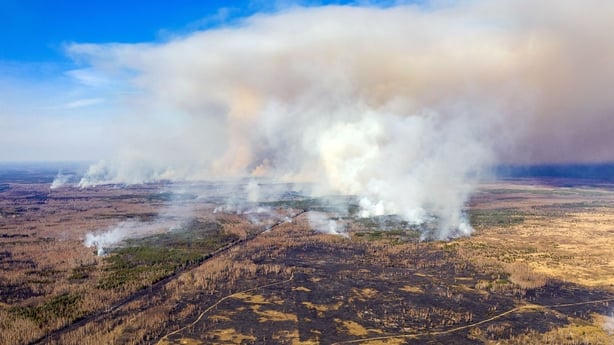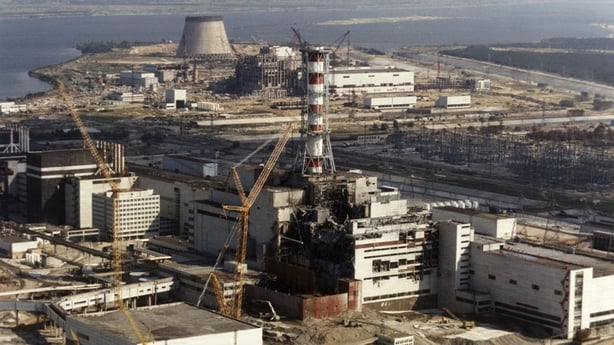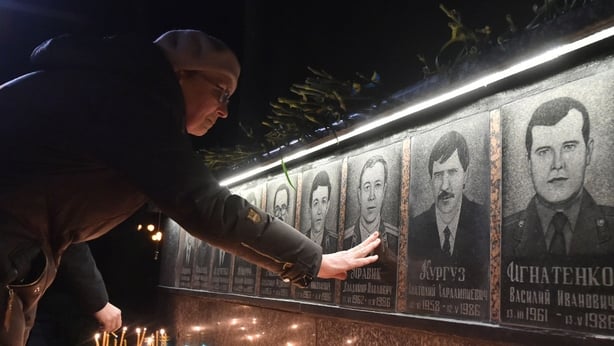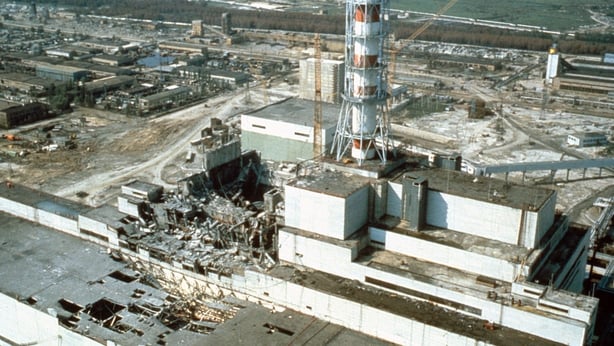Today marks the 35th anniversary of the Chernobyl nuclear disaster that impacted on the lives of countless Ukrainians and Belarusians and also contributed to the downfall of the USSR.
The effect that the accident had on life in the Soviet Union is widely known now. The disaster was one of the first dominoes to fall that led to the dissolution of the USSR, however, it also caused untold suffering among the civilian population living in the region.
Now though, 35 years after the blast, both climate change, and human activity is causing concern among environmental activists, according to Jan Haverkamp who is a senior expert in nuclear energy with GreenPeace.

Forest fires are not new in the Chernobyl Exclusion Zone, however, their frequency and intensity have increased due to climate change. They are also occurring in areas where higher levels of radioactive fallout were deposited.
"Cities like Kyiv likely won't be endangered by redistribution of radioactive isotopes like strontium-90 or cesium-137 but we’re worried about the impact this will have on the firefighters who are tasked with fighting these wildfires.
"The last thing we would all like to see is the fires causing havoc for the people who are doing decontamination work directly at the Chernobyl power plant," Haverkamp said.
Protecting the health of people who need to continue to live in areas that are highly affected is important. There is an issue that there’s no complete agreement among experts about how many health issues are a direct result of the accident.

The direct experience of people living in the region and studies that have been carried out since 1986 show that there is a correlation between the explosion in Chernobyl and the rise in health problems in Ukraine and Belarus.
A 2010 study by the American Academy of Pediatrics found a correlation between the presence of dangerous levels of strontium-90 and high rates of some congenital birth defects.
Another study by UNICEF seemed to suggest that more than 20 per cent of children in Belarus suffer from disabilities caused by birth defects.
After the explosion, wind blew an estimated 70 per cent of the fallout over Belarus and roughly a fifth of the country’s land is still contaminated.
Julie Shynkarenka, lived in Gomel, Belarus, and was 6-years-old at the time of the Chernobyl disaster and can recall how the health of her family and community began to deteriorate.
"People began by complaining about dizziness and nosebleeds and then we began to see more and more people having problems with their thyroid and bones.
"As a result of being exposed to radiation, I nearly lost my vision. I was lucky enough to go to Italy and have a procedure that saved it," she said.

There are plans from Ukraine, Poland, and Belarus to build a 2,000 km shipping canal, and dredging rivers is another way for the fallout to be released again.
The Pripyat River, which passes only 2.5 km from the power plant, is part of the E40 canal proposal which would link the Black Sea to the Baltic Sea.
Haverkamp explained that this will destroy biodiversity in the Polesia region and stir up radioactive fallout that accumulated on the riverbed following the explosion. This runs the risk of contaminating the drinking water for millions of people downstream.
The interest of the international community in solving the challenges Chernobyl poses is waning. People who are now making the decisions weren’t alive in 1986, or were too young at the time, Haverkamp says.

However, it is vital to remain vigilant because if another issue were to occur at Chernobyl, it wouldn’t just be an issue for Ukraine or Belarus, but an issue for all of us.
In 2016, Associated Press reported that the Ukrainian government cancelled a program that provided radiation-free lunches to 350,000 children. For some families, this was their only source of clean food.
"The last thing we want to see is our grandchildren being polluted by whatever stupidity they decide to do with the content of Reactor 4. This is a catastrophe that all of us, globally, need to learn from," Haverkamp said.

